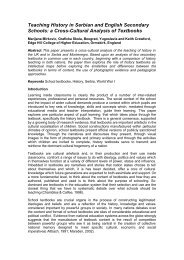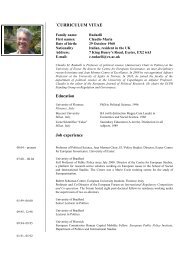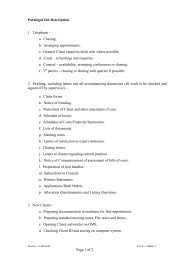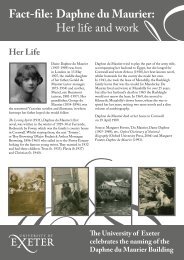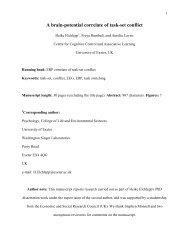Title Elizabeth I and the Spanish Armada Author Carol Baines ...
Title Elizabeth I and the Spanish Armada Author Carol Baines ...
Title Elizabeth I and the Spanish Armada Author Carol Baines ...
Create successful ePaper yourself
Turn your PDF publications into a flip-book with our unique Google optimized e-Paper software.
Opportunity for children to listen to each o<strong>the</strong>r <strong>and</strong> discuss <strong>the</strong> reasons in an<br />
appropriate manner.<br />
Lessons 3 The <strong>Spanish</strong> <strong>Armada</strong> simulation (obtained from <strong>the</strong> course) two, one<br />
hour sessions.<br />
Key Question<br />
1) What factors influenced <strong>the</strong> admirals of <strong>the</strong> English <strong>and</strong> <strong>Spanish</strong> fleets during <strong>the</strong><br />
<strong>Spanish</strong> <strong>Armada</strong> campaign?<br />
Taught exactly from Jon Nichol's lesson plan. After discussing <strong>the</strong> outcomes <strong>the</strong><br />
children <strong>the</strong>n used <strong>the</strong>ir writing frames to write a <strong>Spanish</strong> or English newspaper<br />
article depending on which side <strong>the</strong>y were on.<br />
Lesson 4: Thoughts <strong>and</strong> feelings 'Life on a Galleon' one hour.<br />
Key Question<br />
1) How would a person aboard a ship during <strong>the</strong> <strong>Spanish</strong> <strong>Armada</strong> have felt about<br />
his experiences at sea?<br />
We read through <strong>the</strong> account from <strong>the</strong> survivor of <strong>the</strong> wreck. Determining meanings<br />
of more difficult vocabulary <strong>and</strong> what he was trying to write. In co-operative groups<br />
children discussed what this man would have thought <strong>and</strong> how he felt. Discussed as<br />
a class <strong>and</strong> bullet pointed on easel. Introduced empathy. I <strong>the</strong>n gave <strong>the</strong> children a<br />
choice in which <strong>the</strong>y could write a poem, letter or diary extract of this mans thoughts<br />
<strong>and</strong> experiences aboard <strong>the</strong> ship <strong>and</strong> how he survived.<br />
Lesson 5: Speech at Tilbury picture, one hour.<br />
Key Questions<br />
1) What do you think is happening in <strong>the</strong> picture?<br />
2) Who do you think <strong>the</strong> most important person is?<br />
3) Why are <strong>the</strong>y <strong>the</strong>re?<br />
4) What thoughts would be going through her mind?<br />
5) What sounds could be heard?<br />
The children worked in co-operative groups, each group had a copy of 'Public<br />
Procession to Tilbury' picture. To get <strong>the</strong> children to study <strong>the</strong> picture closely we had<br />
a game of eye spy (ten minutes). One child said 'E' <strong>and</strong> <strong>the</strong>n ano<strong>the</strong>r child guessed<br />
'<strong>Elizabeth</strong>' this went on, for example <strong>the</strong> child who had guessed <strong>Elizabeth</strong> <strong>the</strong>n said<br />
C, ano<strong>the</strong>r pupil <strong>the</strong>n said Crescen<br />
'C' = Crescent<br />
'F' = Fleet <strong>and</strong> so on.<br />
So already <strong>the</strong> children had obtained information about what was happening in <strong>the</strong><br />
picture. Then in <strong>the</strong>ir co-operative groups <strong>the</strong>y <strong>the</strong>n went onto answer <strong>the</strong> key<br />
questions. At <strong>the</strong> end of <strong>the</strong> session <strong>the</strong> children discussed what <strong>the</strong>y had written <strong>and</strong><br />
why.<br />
Lesson 6 The Speech at Tilbury, oral session, twenty minutes



